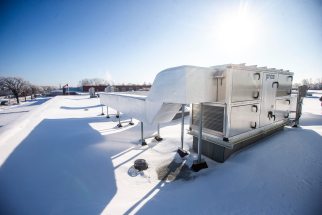Immigration boom creates challenges, opportunities
Read this article for free:
or
Already have an account? Log in here »
To continue reading, please subscribe:
Monthly Digital Subscription
$0 for the first 4 weeks*
- Enjoy unlimited reading on winnipegfreepress.com
- Read the E-Edition, our digital replica newspaper
- Access News Break, our award-winning app
- Play interactive puzzles
*No charge for 4 weeks then price increases to the regular rate of $19.00 plus GST every four weeks. Offer available to new and qualified returning subscribers only. Cancel any time.
Monthly Digital Subscription
$4.75/week*
- Enjoy unlimited reading on winnipegfreepress.com
- Read the E-Edition, our digital replica newspaper
- Access News Break, our award-winning app
- Play interactive puzzles
*Billed as $19 plus GST every four weeks. Cancel any time.
To continue reading, please subscribe:
Add Free Press access to your Brandon Sun subscription for only an additional
$1 for the first 4 weeks*
*Your next subscription payment will increase by $1.00 and you will be charged $16.99 plus GST for four weeks. After four weeks, your payment will increase to $23.99 plus GST every four weeks.
Read unlimited articles for free today:
or
Already have an account? Log in here »
Hey there, time traveller!
This article was published 05/01/2023 (1074 days ago), so information in it may no longer be current.
Canada is in the midst of an immigration boom. Are we ready for all the change that’s coming?
According to Immigration Minister Sean Fraser, in 2022, 437,000 new permanent residents arrived, more than the federal government’s target and the previous record of 405,000 in 2021. The growth in immigration is really no surprise; Ottawa has already enunciated a plan to accept 500,000 immigrants annually by 2025.
The numbers for Manitoba are equally impressive. Last year, up to Oct. 31, more than 19,000 permanent residents entered the province. Final numbers, still being tallied by the province, will ensure 2022 becomes one of the most robust years ever for accepting new residents.
But what of the impact of all those new arrivals?
PATRICK DOYLE / THE CANADIAN PRESS FILES According to Immigration Minister Sean Fraser, 437,000 new permanent residents arrived in 2022.
To be clear, the challenges that face immigrants are not, in and of themselves, caused by immigration. The xenophobes among us may seize upon increased immigration intake as a cause for such issues as a lack of affordable housing, decaying infrastructure and overcrowding in our health-care system.
Those problems and their underlying causes exist completely separate from the number of new Canadians arriving each year.
However, any increase in the number of people living in Canada — and the federal government estimates immigration now accounts for 80 per cent of population growth — will amplify our challenges related to capacity. In short, more people means more demands on everything, from clean-water infrastructure to open beds in personal-care homes.
Of all the issues that can be impacted by a growing population, housing is perhaps the most pressing.
Of all the issues that can be impacted by a growing population, housing is perhaps the most pressing.
Apart from the impact of immigration, Canada is currently suffering through a critical shortage of affordable housing. Canada Mortgage and Housing Corporation estimates the housing industry needs to build 3.5 million new units by 2030 to bring costs down and make owning or renting a home more affordable. At current market pace, Canada will fall short by more than a million units.
Along with the well-documented shortage in housing, there is a shortage of people to build houses. Statistics Canada reported 81,500 vacancies in the construction industry in the first quarter of 2022, which is more than double the number of vacancies reported just two years ago.
Considering the challenges related to housing, it’s perhaps understandable some have concerns about Canada’s ability to absorb a significant influx of new immigrants. However, it’s important to note Canada will never be able to escape the current overpriced, under-supplied housing market conditions without population growth to fill vacancies in the jobs market and drive increases in government’s own-source revenues.
It’s important to note Canada will never be able to escape the current overpriced, under-supplied housing market conditions without population growth to fill vacancies in the jobs market and drive increases in government’s own-source revenues.
The more pressing issue is whether the provinces and the federal government are making the investments now that will allow us to reap the full potential benefits of increased immigration.
Everyone appears to be trying their best. In August, the federal Liberal government announced a $2-billion investment to support the construction of 17,000 new affordable housing units across Canada. This is merely the latest initiative out of a much larger $72-billion, 10-year program to improve housing affordability.
The federal programs are certainly welcome, but more needs to be done. Rather than a drag, population growth fuelled by immigration is a much-needed part of the overall effort to improve economic conditions and access to such fundamental provisions as affordable housing.
The question, then, is not whether Canada is ready to accept more immigrants. Rather, we should be asking whether government has a plan to make the investments and initiate the changes necessary to help all Canadians — including those newly arrived — live better lives.









